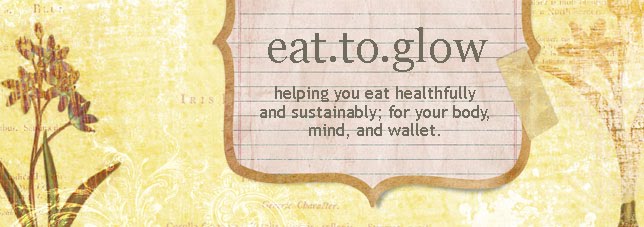So you honestly try to eat healthfully. You really do. But every time you go shopping you face thousands of products that shout health claims like "Low-Fat," "No Added Sugar," "All-Natural," and "Heart Healthy!" Where to start? Your common sense will tell you that Quaker Breakfast Cookies probably aren't the healthiest choice you could make for the most important meal of the day, but beyond that things get more hazy. Here are the first five in my list of ten things to keep in your pantry all the time. With these ten items you should be covered for breakfast, lunch, dinner, snacks, and meals-on-the-go. Bring this list next you go to the store and you can't go wrong.
1. Dried Beans and Lentils
I'm not a true vegetarian, but I eat like one most of the time, and one of the biggest reasons is cost. Even the cheapest meats and poultry are more expensive than "vegetarian" sources of protein like beans and other legumes. And there are so many to choose from! Black beans, kidney beans, chickpeas, navy beans, edamame, split peas, lentils, and the list goes on. Experiment and find your favorites. Check out this helpful guide from the Mayo Clinic to find out which beans are best in which dishes and how to prepare and cook them.
2. Canned Tuna OR Canned Sardines
Omega-3's, omega-3's, omega-3's! You've probably heard this term tossed around a lot lately, but it's for a good reason. Omega-3 fatty acids are really important in reducing inflammation in the body, which in turn reduces the risk of common health problems like heart disease and cancer. And if you're too young to think you need to worry about those, remember that omega-3's are important for hair and skin health. The great news is that tuna and sardines (see my sardines? post for more sardine benefits) are both great sources of omega-3's and are also some of the cheapest forms of protein in the grocery store (usually at a dollar or less per can). So stock up! They're really versatile, too. On a cheese sandwich, as a cracker dip, in a hotdish/casserole, or even plain. For more ideas, look here:
20 Ways to Use a Can of Tuna
Low-Cost Cooking With the Lowly Sardine
3. Whole Grain Cereal OR Oatmeal
If you're a breakfast person (I won't judge you if you aren't, but would highly recommend you be) it's a good idea to find a whole grain cereal that's as minimally processed as possible and contains little sugar. My college-student-budget favorites?
-Kashi GoLean: One cup has 13 grams of protein and 10 grams of fiber for just 140 calories. It goes on sale at Target for as little as $2.80 a box. And man is this stuff filling.
-Food Club Essential Choice Bite Size Shredded Wheat: A box of this cereal has only one ingredient. Yeah, you read right, 100% whole grain wheat is the only ingredient here. Consequently it tastes pretty bland, so I eat it with vanilla soymilk, which sweetens it up a lot. A 1-1/4 cup serving has 6 grams of protein and 6 grams of fiber for 170 calories. A very hearty start to your day. Plus, because Food Club is a generic brand, boxes are almost always on sale for $2.50. A very economical start to your day as well. :)
4. Olive Oil (virgin if possible)
Olive oil is widely considered the healthiest fat to use in cooking. Why? First, because of it's richness in monounsaturated fats (called MUFAs), which are linked to the prevention of heart disease. Second, due to its high levels of phenolic compounds, which act as antioxidants. Use it for all of your cooking fat needs.
5. Popcorn (the dry kernels, not the microwavable bags)
Maybe it's not so good for you when doused in butter at the movies or covered in carmel in a Christmas tin, but make no mistake, pure popcorn is a fantastic snack. According to NutritionData.com, one air-popped cup has just 31 calories and is high in fiber. And remeber those phenol antioxidants I mentioned are in olive oil? They're in popcorn, too.To make it healthy and tasty you can either air-pop it or make it on the stove. If you're air popping, flavor it afterward by sprinkling it with a little butter or olive oil and salt to taste. Or try something new like cinnamon or chili powder. The more flavor from spices and such, the less you'll need from butter or oil. My personal favorite way to make popcorn, though, is stove-top. My dad uses two tablespoons of oil and a "heaping half cup of kernels." So. Good. Never made stove-top popcorn before? Thank goodness for YouTube. Oh and did I mention? You can get a giant bag of unpopped popcorn for a couple of bucks.
Photos from yummydelicious.com and apartmenttherapy.com.
Friday, May 28, 2010
Subscribe to:
Post Comments (Atom)










I always have olive oil because you can add some pepper and parmesan to it and all of a sudden it is EXTREMELY delicious on good bread, but it is so easy to eat too much because it is so rich! I will perhaps have to dip my toes into some real cooking to try out those beans, though. I usually just cheat and buy canned soups and the like instead of re-inflating dried out beans. :)
ReplyDelete